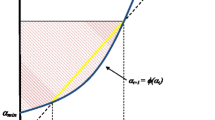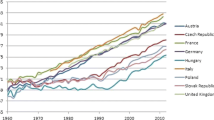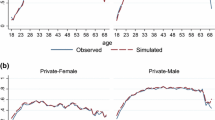Abstract.
For pay-as-you-go financed pension systems, claims may be calculated according to individual contributions (income) or the number of children of a family. We analyse the optimal structure of these parameters in a model with endogenous fertility. It is shown that for both structural determinants there exists no interior solution of the problem of intragenerational utility maximisation. Thus, pure systems are always welfare maximizing. Furthermore, children-related pension claims induce a fiscal externality that tends to be positive. The determination of the optimal contribution rate shows that the widely accepted Aaron-condition is in general a misleading indicator for the comparison of fully funded and pay-as-you-go financed pension systems.
Similar content being viewed by others
Author information
Authors and Affiliations
Additional information
Received March 12, 1996 / Accepted January 27, 1997
Rights and permissions
About this article
Cite this article
Kolmar, M. Intergenerational redistribution in a small open economy with endogenous fertility. J Popul Econ 10, 335–356 (1997). https://doi.org/10.1007/s001480050047
Issue Date:
DOI: https://doi.org/10.1007/s001480050047




